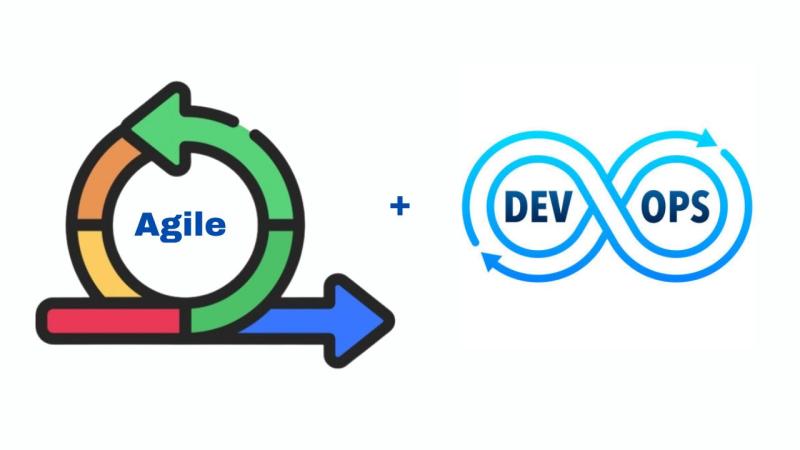The Benefits of Agile Methodology Over Scrum: Is Scrum Always the Best Choice?

Agile methodology and Scrum
framework are often used interchangeably in software development and project
management. However, they represent different concepts with distinct features.
While Scrum is a specific implementation of Agile, Agile encompasses a broader
set of principles and values. This article will explore the benefits of Agile vs Scrum and help clarify whether Scrum is always the best choice for project
management.
Understanding Agile and Scrum
Agile philosophy
emphasizes iterative development, collaboration, flexibility, and customer
satisfaction. It provides a set of principles outlined in the Agile Manifesto,
which promotes adaptive planning and encourages rapid delivery of high-quality
software. Agile is not confined to any specific process; it serves as a guiding
framework that can be tailored to fit various projects.
Scrum, on the other hand,
is an Agile framework that provides specific practices and roles to implement
Agile principles. It consists of defined roles (Scrum Master, Product Owner,
Development Team), ceremonies (Sprint Planning, Daily Stand-ups, Sprint Reviews,
and Retrospectives), and artifacts (Product Backlog, Sprint Backlog, and
Increment). Scrum is designed for teams to deliver products in short iterations
called Sprints, typically lasting two to four weeks.
Benefits of Agile Methodology
1. Flexibility and Adaptability
One of the main advantages of
Agile is its inherent flexibility. Agile methodologies encourage teams to adapt
to changing requirements and market conditions, allowing them to pivot quickly
when necessary. This flexibility is particularly beneficial in industries where
customer needs are rapidly evolving. While Scrum provides a structured
framework, it can sometimes be rigid due to its predefined roles and
ceremonies. Agile methodologies, like Kanban or Lean, offer alternative
approaches that can be more adaptable to different team dynamics and project
scopes.
2. Wider Applicability
Agile methodologies can be
applied to various industries beyond software development, including marketing,
product development, and organizational change. This versatility allows teams
to adopt Agile principles without following the Scrum framework. Organizations
that require a less prescriptive approach may find other Agile methodologies
better suited to their needs, enabling them to tailor processes that align with
their specific goals and culture.
3. Continuous Improvement
Agile emphasizes a culture of
continuous improvement through regular feedback and iterative development.
While Scrum encourages reflection during Sprint Retrospectives, other Agile
methodologies may integrate feedback loops more fluidly throughout the process.
For instance, Agile approaches like Extreme Programming (XP) prioritize
continuous customer feedback, allowing teams to adjust their work based on
real-time insights and evolving user needs.
4. Empowered Teams
Agile methodology promotes
self-organizing teams empowered to make decisions and take ownership of their
work. This can lead to increased morale and higher productivity. While Scrum
provides clear roles, it can sometimes create hierarchical structures that
limit team autonomy. Agile principles encourage a collaborative environment
where team members contribute to decision-making, fostering a sense of
ownership and commitment.
5. Focus on Value Delivery
Agile methodologies prioritize
delivering value to customers at every stage of the project. While Scrum
emphasizes delivering increments of work during Sprints, other Agile frameworks
focus more broadly on continuous delivery and deployment. This approach ensures
that teams frequently release valuable features, reducing time-to-market and
enhancing customer satisfaction.
Is Scrum Always the Best Choice?
While Scrum is a popular and
practical framework for many teams, there are better choices than Scrum. The
decision to use Scrum or another Agile methodology depends on several factors:
- Team Size and Structure: Scrum works well
for small to medium-sized teams. Larger teams or organizations may benefit
from scaling frameworks like SAFe (Scaled Agile Framework) or LeSS (Large
Scale Scrum), designed to address more significant projects' complexities.
- Project Complexity and Scope: For projects
with rapidly changing requirements or high uncertainty, more flexible
Agile methodologies, such as Kanban, may be more appropriate. Scrum's
structured nature can sometimes hinder adaptability when requirements
evolve frequently.
- Organizational Culture: A culture that
emphasizes strict hierarchies and formal roles may need help with Scrum's
emphasis on self-organizing teams. An Agile methodology that encourages
collaboration without rigid structures may be a better fit in such cases.
- Nature of the Work: Scrum is ideal for
projects that benefit from time-boxed iterations and frequent reviews.
However, Kanban or other Agile approaches may prove more efficient for
ongoing maintenance work or projects that require a continuous flow of
tasks.
Conclusion
While Scrum offers a robust
framework for implementing Agile principles, it is essential to recognise that
it is not the only option available. Agile methodology provides a broader set
of values and practices that can be tailored to suit different project needs,
team structures, and organizational cultures. By understanding the benefits of
Agile over Scrum, teams can make informed decisions that enhance their project
management processes and ultimately lead to better outcomes. The best choice is
not necessarily one-size-fits-all; instead, it should align with the specific
context and goals of the project.










Comments